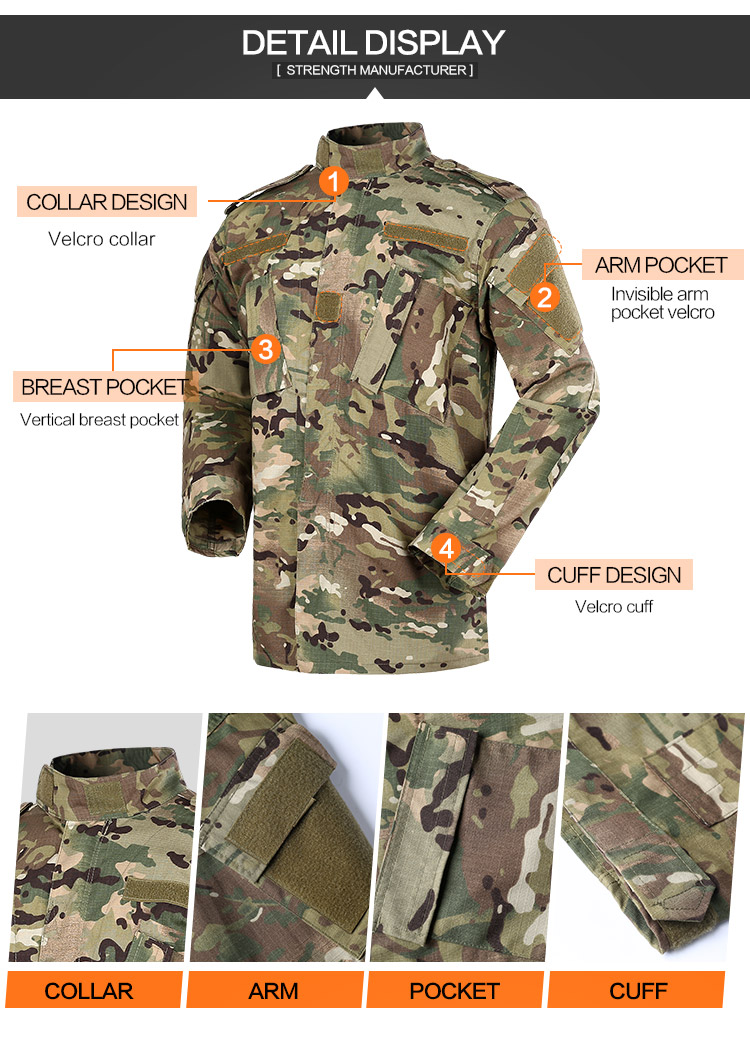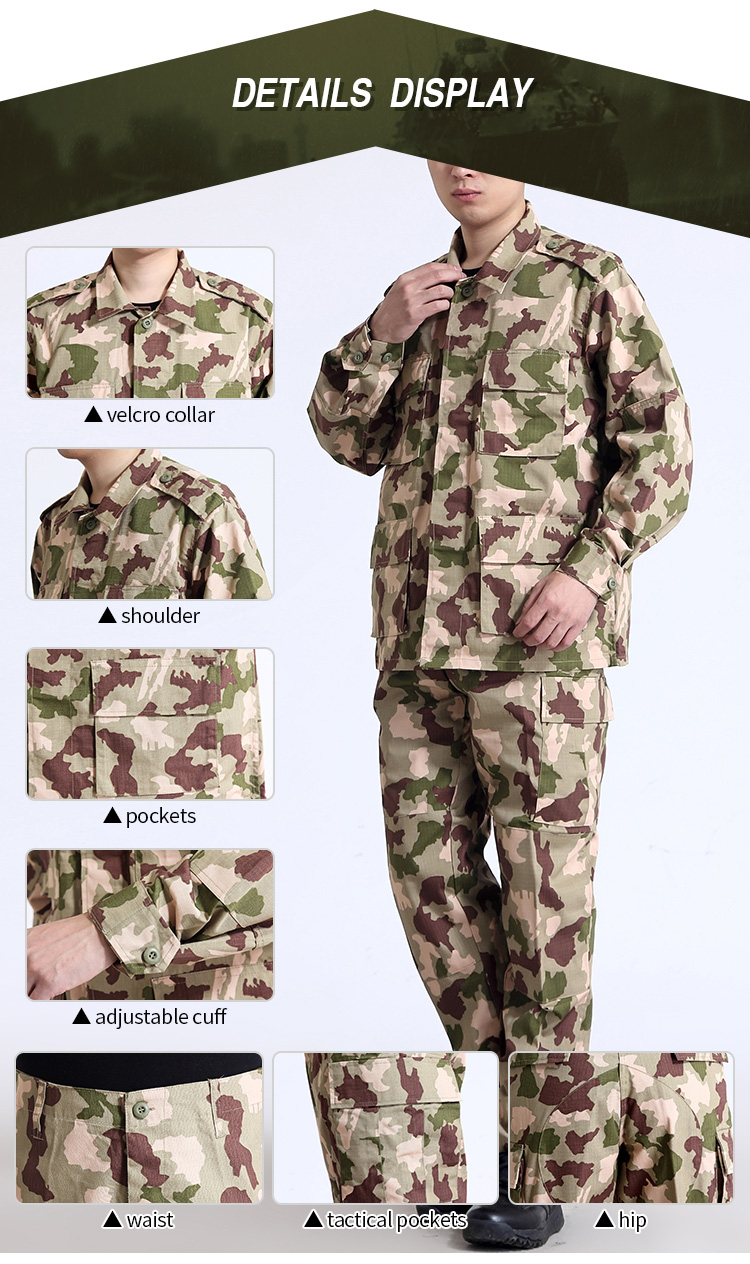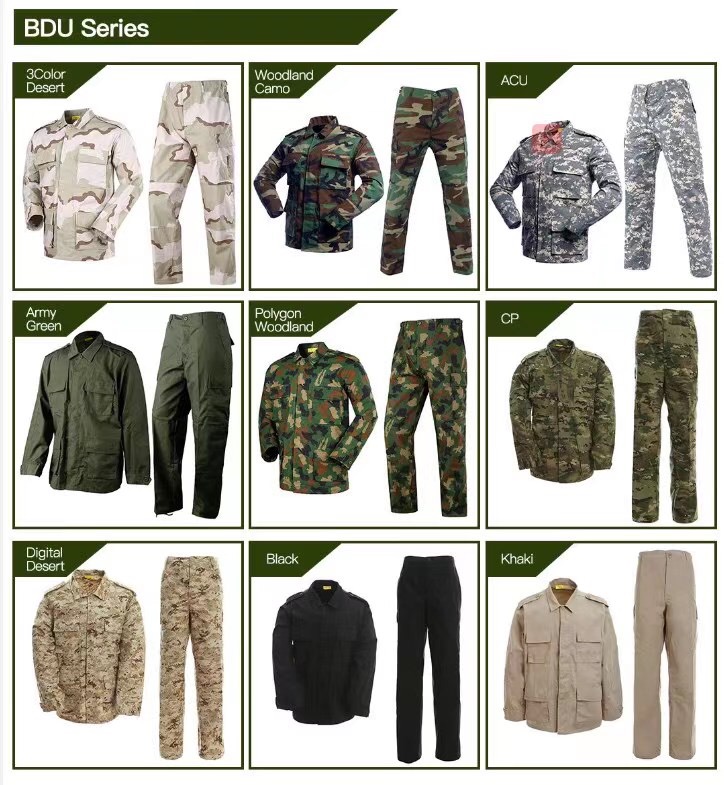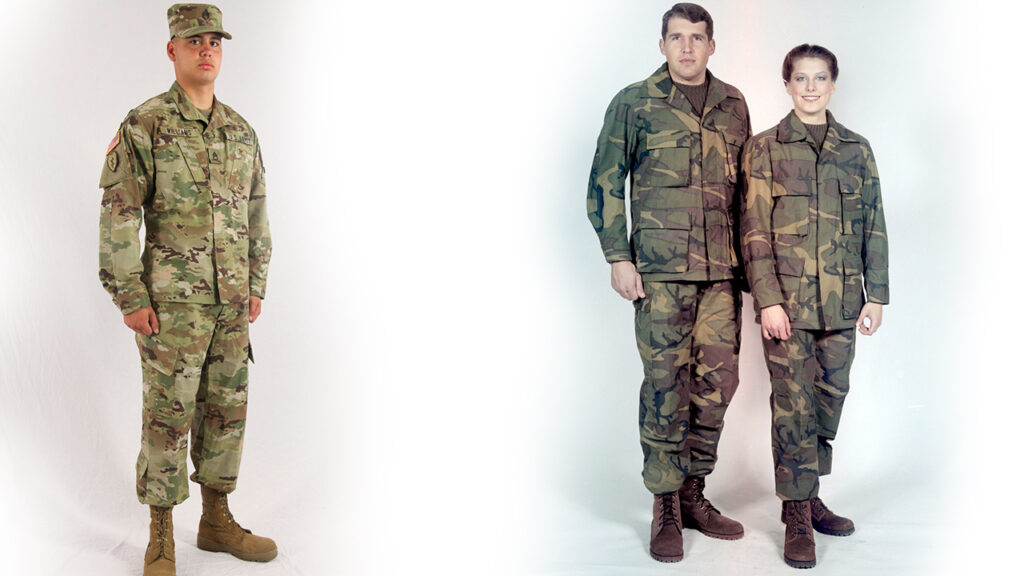Introduction
What are the differences between ACU and BDU? Military uniforms do more than just clothe soldiers; they symbolize discipline, order, and heritage. Among these varied designs, the Army Combat Uniform (ACU) and the Battle Dress Uniform (BDU) stand out for their distinctive features and historical significance.
Their main differences are in color and pattern, design, fabric, usage and performance. This article dives into the key differences that set these uniforms apart, shedding light on how each fits into the broader narrative of military apparel.
Historical Context of ACU and BDU
The BDU, first issued in the late 1970s, served as the standard combat uniform of the United States Armed Forces until the mid-2000s.
It was designed for utility, durability, and camouflage in various environments. Transitioning into the 21st century, the ACU replaced the BDU in 2005 to address the evolving needs of modern warfare, incorporating digital camouflage patterns and an enhanced design that supports advanced combat technology.
Camouflage Pattern
- The ACU uses a digital camouflage pattern with small, pixelated squares designed to provide effective concealment across various environments, including urban areas.1 2
- The BDU featured a more traditional, mottled woodland camouflage pattern with green, brown, and black shapes aimed at blending into wooded areas.

Fabric and Material
- The ACU is made from a lighter weight, more breathable material blend (e.g., 65% cotton, 35% nylon) designed for improved comfort and moisture-wicking in hot climates.1 2
- The BDU was made from a heavier cotton/polyester blend that could be hot and less breathable.

Design Features
- The ACU includes integrated pockets for knee and elbow pads, a mandarin collar for neck protection, and hook-and-loop fasteners for attaching patches.1
- The BDU had a traditional collar, no integrated pad pockets, and button closures.


Pockets and Storage
- The ACU jacket has 4 pockets, including shoulder pockets for easy access during combat.2
- The BDU jacket had 5 buttons, 2 upper box pockets, and 2 lower box pockets.


Usage and Performance
While both uniforms were designed with the soldier in mind, the ACU has been noted for its adaptability across various combat scenarios.
Feedback from the field suggests that the ACU’s lighter materials and flexible design allow for better mobility and comfort during extended operations.

Cultural Impact and Legacy
Both uniforms have left a lasting impact on military and popular culture.
The BDU, with its iconic patterns, has become synonymous with military toughness and has been widely adopted in civilian fashion.
The ACU, meanwhile, represents the modern soldier—equipped, adaptable, and ready for challenges anywhere in the world.
Conclusion
The transition from BDU to ACU marks significant progress in the design and functionality of military uniforms.
By understanding these changes, we appreciate not just the practical applications but also the cultural symbolism embedded in military dress.
As warfare and technology evolve, so too will the fabrics, features, and fits of military uniforms, continuing to shape the identity and capabilities of the armed forces.
Related Questions
What are the advantages of ACU over BDU uniforms?

- Improved Camouflage Pattern: The ACU features a digital camouflage pattern with small, pixelated squares designed to provide better concealment across various environments, including urban areas, compared to the traditional mottled woodland pattern of the BDU.3 1
- Lighter and More Breathable Fabric: The ACU is made from a lighter weight, more breathable material blend (e.g., 65% cotton, 35% nylon) that enhances comfort and moisture-wicking, especially in hot climates, unlike the heavier cotton/polyester blend of the BDU.3 1
- Integrated Protective Features: The ACU includes integrated pockets for knee and elbow pads, providing additional protection for soldiers during combat operations, a feature not present in the BDU.1
- Improved Collar Design: The ACU has a mandarin collar that offers better neck protection compared to the traditional collar of the BDU.1
- Modular Attachment System: The ACU incorporates hook-and-loop fasteners for attaching patches, badges, and other items, allowing for greater customization and modularity.1
- Optimized for Urban Environments: The ACU’s lighter shade of green and digital pattern are designed to provide better concealment in urban areas, whereas the BDU’s olive green and mottled pattern were more suited for woodland environments.1
- Updated Pocket Configuration: The ACU jacket has four pockets, including shoulder pockets for easy access during combat, while the BDU had a different pocket layout with five buttons and four box pockets.3
Overall, the ACU represents a modernization of the BDU design, incorporating advancements in camouflage patterns, fabric materials, protective features, and modular capabilities to better meet the evolving needs of military personnel across diverse operational environments.
What are the differences in camouflage patterns between ACU and BDU uniforms?

- Pattern Design:
- The ACU uses a digital camouflage pattern with small, pixelated squares in shades of green, gray, and tan.1 2 This design aims to provide effective concealment across various environments like woodlands, deserts, and urban areas.
- The BDU featured a more traditional, mottled woodland camouflage pattern with larger blotches of green, brown, and black colors.1 4 This pattern was optimized for concealment in wooded/forested areas.
- Versatility:
- The ACU’s digital pattern was designed to be a versatile “80% solution” that performs reasonably well across diverse environments, not limited to just woodlands.1 2
- The BDU’s woodland pattern was more specialized and effective primarily in densely vegetated, wooded environments.1 4
- Color Palette:
- The ACU uses a lighter shade of green along with grays and tans in its color palette, making it more suitable for urban and desert environments as well.1 2
- The BDU featured darker shades of green, brown, and black, blending better with the colors found in traditional woodland settings.1 4
- Infrared Signature:
- Both the ACU and BDU patterns incorporate dyes and color schemes that provide effective concealment in the near-infrared spectrum, enhancing protection against night vision devices.4 2
- Pattern Evolution:
- The ACU’s digital pattern represents a more modern and advanced camouflage design compared to the BDU’s traditional mottled pattern.1 2
- The BDU pattern was an earlier iteration, eventually replaced by the more versatile ACU pattern as camouflage technology evolved.4 2
In summary, the ACU’s digital camouflage pattern was a significant upgrade over the BDU’s woodland pattern, offering improved versatility across diverse environments, a more modern color palette, and advanced design principles for enhanced concealment and protection against detection.

